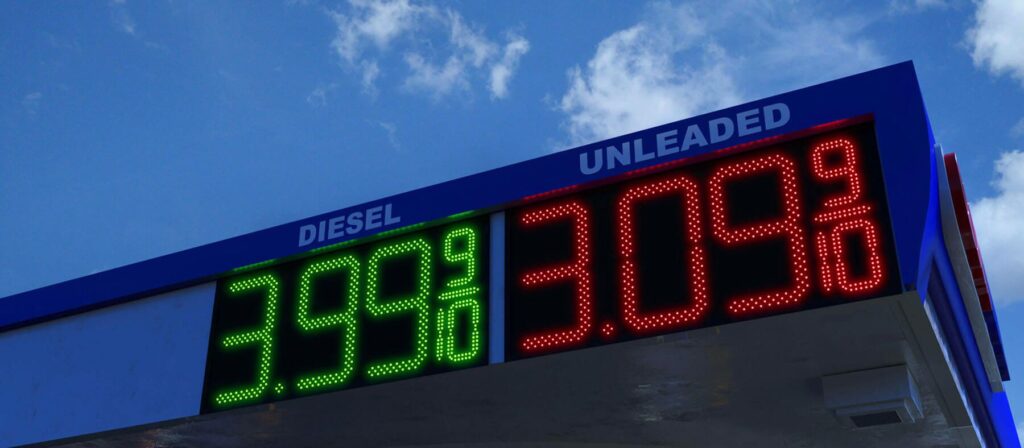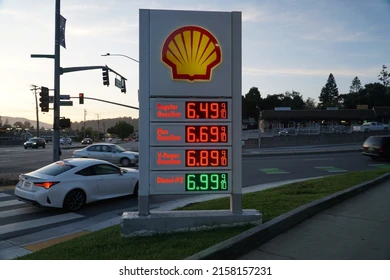
gas price sign
Introduction to gas price sign
Gas price signs are a familiar sight on highways, city streets, and gas station forecourts. But have you ever wondered how these signs have evolved or why they hold such significant importance? From their role in shaping consumer decisions to the technology behind modern digital signs, gas price signs are more than just numbers on a board. Let’s dive deep into the world of gas price signs and uncover what makes them so essential in our daily lives.
The Evolution of Gas Price Signs
From Handwritten Boards to Digital Displays
Gas price signs have come a long way from the early days of handwritten chalkboards. In the past, gas station attendants would manually update the prices with chalk or interchangeable numbers. While these methods were practical at the time, they were time-consuming and prone to human error.
With the advent of digital technology, gas stations began to adopt electronic signs in the late 20th century. These signs allowed for quicker updates and reduced the chances of mistakes. Today, digital are the industry standard, providing accuracy, visibility, and convenience.
The Role of Gas Price Signs in Marketing
Beyond displaying prices, play a significant role in attracting customers. A well-placed and easily readable sign can make a gas station stand out from competitors. In a highly competitive market, where drivers are always on the lookout for the best prices, a clear and prominent can be the deciding factor in where they choose to refuel.
Additionally, gas price sign can serve as a marketing tool for promotions, such as discounts on car washes or convenience store items. By incorporating LED technology, modern signs can display more than just fuel prices, making them versatile marketing assets.
How Gas Price Signs Reflect Economic Trends
Gas prices fluctuate due to various factors, including crude oil prices, taxes, and geopolitical events. Gas price signs serve as real-time indicators of these economic changes. When prices rise or fall, consumers immediately notice the impact through the numbers displayed on these signs.
In many ways, act as a barometer for the economy. When gas prices are high, it often signals inflationary pressures, while lower prices can indicate a surplus in oil production or reduced demand. Understanding the numbers on these signs provides insight into broader economic trends.
Types of Gas Price Signs
Traditional Manual Gas Price Signs
Manual are the most basic type. These signs require station attendants to manually change the numbers, usually by sliding in pre-made number cards. While these signs are becoming less common, they are still found in some rural areas and smaller gas stations.
Manual signs have their advantages, such as lower upfront costs and no need for electricity. However, they are labor-intensive and can be challenging to update quickly, especially during rapid price changes.
LED Digital Gas Price Signs
LED digital are the most popular choice for modern gas stations. These signs use light-emitting diodes (LEDs) to display numbers and text. They offer several benefits, including:
Brightness LED signs are highly visible, even in direct sunlight or adverse weather conditions Remote Control Prices can be updated remotely through a computer or mobile device, making it easy for station managers to adjust prices in real time Energy Efficiency LED signs consume less energy compared to traditional illuminated signs, reducing operating costs.
LED digital signs also provide flexibility. They can display promotional messages, time and temperature, and even graphics, making them multifunctional tools for gas stations.
Electronic Gas Price Signs with Wireless Control
Electronic gas price signs with wireless control are an advanced version of LED signs. These signs use wireless technology to update prices instantly. Station managers can change the prices using a smartphone app or a computer program, eliminating the need for manual adjustments.
Wireless control systems offer additional security, ensuring that only authorized personnel can change the prices. This feature is particularly useful in preventing unauthorized access or tampering.
The Importance of Gas Price Signs for Consumers
Helping Drivers Make Quick Decisions
For many drivers, the price of gas is a crucial factor in choosing where to refuel. Gas price signs help drivers make quick decisions by providing clear and visible information. When drivers see a competitive price displayed on a sign, they are more likely to choose that station over others.
In addition, gas price signs can influence driving behavior. Drivers may alter their routes to take advantage of lower gas prices, which highlights the importance of strategically placing signs for maximum visibility.
Building Trust and Transparency
Gas price signs also play a role in building trust between gas stations and consumers. By displaying current prices, stations demonstrate transparency and honesty. Consumers appreciate knowing the exact price they will pay before pulling into a station.
Furthermore, digital gas price signs can display additional information, such as fuel grades and payment options, providing even more transparency to consumers.

Encouraging Brand Loyalty
Gas stations that consistently offer competitive prices and maintain clear, readable signs can build brand loyalty over time. Consumers are more likely to return to a station where they know they will find fair prices and a reliable experience.
Incorporating brand logos and promotional messages into gas price signs can also enhance brand recognition and loyalty. When consumers associate a station’s brand with positive experiences, they are more likely to choose that station in the future.
Technology Behind Modern Gas Price Signs
LED Technology
LED technology is the backbone of modern gas price signs. LEDs are energy-efficient, long-lasting, and provide excellent visibility. Unlike traditional incandescent bulbs, LEDs do not generate as much heat, reducing the risk of damage to the sign.
LED gas price signs can be customized in various colors and sizes to match a station’s branding. They can also display dynamic content, such as scrolling text or animations, making them more engaging for drivers.
Wireless Communication Systems
Wireless communication systems allow gas stations to update prices remotely. These systems use secure connections to ensure that only authorized personnel can access and change the prices. Wireless control eliminates the need for manual updates, saving time and reducing the risk of errors.
Some advanced systems also integrate with point-of-sale (POS) systems, ensuring that the prices displayed on the signs match the prices at the pump.
Solar-Powered Gas Price Signs
Solar-powered gas price signs are an eco-friendly option for stations looking to reduce their carbon footprint. These signs use solar panels to generate electricity, reducing the reliance on grid power.
While the initial investment in solar-powered signs may be higher, they can result in significant long-term savings on energy costs. Additionally, solar-powered signs are ideal for remote locations where access to electricity may be limited.
Conclusion
Gas price signs are more than just numbers on a board; they are vital tools for gas stations and consumers alike. From their humble beginnings as handwritten boards to the high-tech digital displays of today, gas price signs have evolved to meet the needs of a changing market.
By understanding the different types of gas price signs and the technology behind them, gas station owners can make informed decisions to enhance their visibility and attract more customers. At the same time, consumers can use gas price signs to make smarter choices about where to refuel, ultimately saving money and time.


